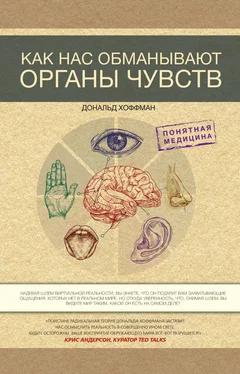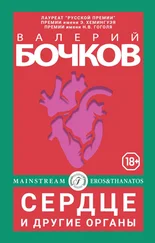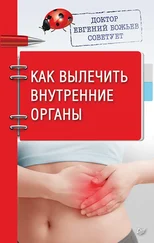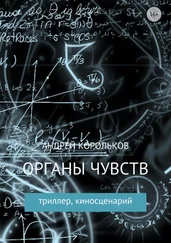Muller, M. N., Marlowe, F. W., Bugumba, R., and Ellison, P. T. 2009. “Testosterone and paternal care in East African foragers and pastoralists,” Proceedings of the Royal Society, B 276: 347–54; Storey, A. E., Walsh, C. J., Quinton, R. L., and Wynne-Edwards, K. E. 2000. “Hormonal correlates of paternal responsiveness in new and expectant fathers,” Evolution and Human Behavior 21: 79–95.
DeBruine, L., Jones, B. C., Frederick, D. A., Haselton, M. G., Penton-Voak, I. S., and Perrett, D. I. 2010. “Evidence for menstrual cycle shifts in women’s preferences for masculinity: A response to Harris (in press), ‘Menstrual cycle and facial preferences reconsidered,’ ” Evolutionary Psychology 8: 768–75; Johnston, V. S., Hagel, R., Franklin, M., Fink, B., and Grammer, K. 2001. “Male facial attractiveness: Evidence for a hormone-mediated adaptive design,” Evolution and Human Behavior 22: 251–67; Jones, B. C., Little, A. C., Boothroyd, L. G., DeBruine, L. M., Feinberg, D. R., Law Smith, M. J., Moore, F. R., and Perrett, D. I. 2005, “Commitment to relationships and preferences for femininity and apparent health in faces are strongest on days of the menstrual cycle when progesterone level is high,” Hormones and Behavior 48: 283–90; Little, A. C., Jones, B. C., and DeBruine, L. M. 2008. “Preferences for variation in masculinity in real male faces change across the menstrual cycle,” Personality and Individual Differences 45: 478–82; Vaughn, J. E., Bradley, K. I., Byrd-Craven, J., and Kennison, S. M. 2010. “The effect of mortality salience on women’s judgments of male faces,” Evolutionary Psychology 8: 477–91.
Johnston, L., Arden, K., Macrae, C. N., and Grace, R. C. 2003. “The need for speed: The menstrual cycle and personal construal,” Social Cognition 21: 89–100; Macrae, C. N., Alnwick, K. A., Milne, A. B., and Schloerscheidt, A. M. 2002. “Person perception across the menstrual cycle: Hormonal influences on social-cognitive functioning,” Psychological Science 13: 532–36; Roney, J. R., and Simmons, Z. L. 2008. “Women’s estradiol predicts preference for facial cues of men’s testosterone,” Hormones and Behavior 53: 14–19; Rupp, H. A., James, T. W., Ketterson, E. D., Sengelaub, D. R., Janssen, E., and Heiman, J. R. 2009. “Neural activation in women in response to masculinized male faces: Mediation by hormones and psychosexual factors,” Evolution and Human Behavior 30: 1–10; Welling, L. L., Jones, B. C., DeBruine, L. M., Conway, C. A., Law Smith, M. J., Little, A. C., Feinberg, D. R., Sharp, M. A., and Al-Dujaili, E. A. S. 2007. “Raised salivary testosterone in women is associated with increased attraction to masculine faces,” Hormones and Behavior 52: 156–61.
Feinberg, D. R., Jones, B. C., Law Smith, M. J., Moore, F. R., DeBruine, L. M., Cornwell, R. E., Hillier, S. G., and Perrett, D. I. 2006. “Menstrual cycle, trait estrogen level, and masculinity preferences in the human voice,” Hormones and Behavior 49: 215–22; Gangestad, S. W., Simpson, J. A., Cousins, A. J., Garver-Apgar, C. E., and Christensen, P. N. 2004. “Women’s preferences for male behavioral displays change across the menstrual cycle,” Psychological Science 15: 203–7; Gangestad, S. W., Garver-Apgar, C. E., Simpson, J. A., and Couins, A. J. 2007. “Changes in women’s mate preferences across the ovulatory cycle,” Journal of Personality and Social Psychology 92: 151–63; Grammer, K. 1993. “5-α-androst-16en-3α-on: A male pheromone? A brief report,” Ethology and Sociobiology 14: 201–8; Havlicek, J., Roberts, S. C., and Flegr, J. 2005. “Women’s preference for dominant male odour: Effects of menstrual cycle and relationship status,” Biology Letters 1: 256–59; Hummel, T., Gollisch, R., Wildt, G., and Kobal, G. 1991. “Changes in olfactory perception during the menstrual cycle,” Experentia 47: 712–15; Little, A. C., Jones, B. C., and Burriss, R. P. 2007. “Preferences for masculinity in male bodies change across the menstrual cycle,” Hormones and Behavior 52: 633–39; Lukaszewski, A. W., and Roney, J. R. 2009. “Estimated hormones predict women’s mate preferences for dominant personality traits,” Personality and Individual Differences 47: 191–96; Provost, M. P., Troje, N. F., and Quinsey, V. L. 2008. “Short-term mating strategies and attraction to masculinity in point-light walkers,” Evolution and Human Behavior 29: 65–69; Puts, D. A. 2005. “Mating context and menstrual phase affect women’s preferences for male voice pitch,” Evolution and Human Behavior 26: 388–97; Puts, D. A. 2006. “Cyclic variation in women’s preferences for masculine traits: Potential hormonal causes,” Human Nature 17: 114–27.
Bellis, M. A., and Baker, R. R. 1990. “Do females promote sperm competition? Data for humans,” Animal Behaviour 40: 997–99; Gangestad, S. W., Thornhill, R., and Garver, C. E. 2002. “Changes in women’s sexual interests and their partners’ materetention tactics across the menstrual cycle: Evidence for shifting conflicts of interest,” Proceedings of the Royal Society of London B 269: 975–82; Gangestad, S. W., Thornhill, R., and Garver-Apgar, C. E. 2005. “Women’s sexual interests across the ovulatory cycle depend on primary partner developmental instability,” Proceedings of the Royal Society of London B 272: 2023–27; Haselton, M. G., and Gangestad, S. W. 2006. “Conditional expression of women’s desires and men’s mate guarding across the ovulatory cycle,” Hormones and Behavior 49: 509–18; Jones, B. C., Little, A. C., Boothroyd, L. G., DeBruine, L. M., Feinberg, D. R., Law Smith, M. J., Moore, F. R., and Perrett, D. I. 2005. “Commitment to relationships and preferences for femininity and apparent health in faces are strongest on days of the menstrual cycle when progesterone level is high,” Hormones and Behavior 48: 283–90; Pillsworth, E., and Haselton, M. 2006. “Male sexual attractiveness predicts differential ovulatory shifts in female extra-pair attraction and male mate retention,” Evolution and Human Behavior 27: 247–58; Guéguen, N. 2009a. “The receptivity of women to courtship solicitation across the menstrual cycle: A field experiment,” Biological Psychology 80: 321–24; Guéguen, N. 2009b. “Menstrual cycle phases and female receptivity to a courtship solicitation: An evaluation in a nightclub,” Evolution and Human Behavior 30: 351–55; Durante, K. M., Griskevicius, V., Hill, S. E., Perilloux, C., and Li, N. P. 2011. “Ovulation, female competition, and product choice: Hormonal influences on consumer behavior,” Journal of Consumer Research 37: 921–35; Durante, K. M., Li, N. P., and Haselton, M. G. 2008. “Changes in women’s choice of dress across the ovulatory cycle: Naturalistic and laboratory task-based evidence,” Personality and Social Psychology Bulletin 34: 1451–60; Haselton, M. G., Mortezaie, M., Pillsworth, E. G., Bleske-Rechek, A., and Frederick, D. A. 2007. “Ovulatory shifts in human female ornamentation: Near ovulation, women dress to impress,” Hormones and Behavior 51: 40–45; Hill, S. E., and Durante, K. M. 2009. “Do women feel worse to look their best? Testing the relationship between self-esteem and fertility status across the menstrual cycle,” Personality and Social Psychology Bulletin 35: 1592–601.
Gangestad, S. W., Thornhill, R., and Garver-Apgar, C. E. 2005. “Women’s sexual interests across the ovulatory cycle depend on primary partner developmental instability,” Proceedings of the Royal Society of London B 272: 2023–27; Haselton, M. G., and Gangestad, S. W. 2006. “Conditional expression of women’s desires and men’s mate guarding across the ovulatory cycle,” Hormones and Behavior 49: 509–18; Pillsworth, E., and Haselton, M. 2006. “Male sexual attractiveness predicts differential ovulatory shifts in female extra-pair attraction and male mate retention,” Evolution and Human Behavior 27: 247–58. MHC genes: Garver-Apgar, C. E., Gangestad, S. W., Thornhill, R., Miller, R. D., and Olp, J. J. 2006. “Major histocompatibility complex alleles, sexual responsivity, and unfaithfulness in romantic couples,” Psychological Science 17: 830–35.
Читать дальше












